Abstract
A method for assessing genomic similarity based on relative abundances of short oligonucleotides in large DNA samples is introduced. The method requires neither homologous sequences nor prior sequence alignments. The analysis centers on (i) dinucleotide (and tri- and tetra-) relative abundance extremes in genomic sequences, (ii) distances between sequences based on all dinucleotide relative abundance values, and (iii) a multidimensional partial ordering protocol. The emphasis in this paper is on assessments of general relatedness of genomes as distinguished from phylogenetic reconstructions. Our methods demonstrate that the relative abundance distances almost always differ more for genomic interspecific sequence comparisons than for genomic intraspecific sequence comparisons, indicating congruence over different genome sequence samples. The genomic comparisons are generally concordant with accepted phylogenies among vertebrate and among fungal species sequences. Several unexpected relationships between the major groups of metazoa, fungal, and protist DNA emerge, including the following. (i) Schizosaccharomyces pombe and Saccharomyces cerevisiae in dinucleotide relative abundance distances are as similar to each other as human is to bovine. (ii) S. cerevisiae, although substantially far from, is significantly closer to the vertebrates than are the invertebrates (Drosophila melanogaster, Bombyx mori, and Caenorhabditis elegans). This phenomenon may suggest variable evolutionary rates during the metazoan radiations and slower changes in the fungal divergences, and/or a polyphyletic origin of metazoa. (iii) The genomic sequences of D. melanogaster and Trypanosoma brucei are strikingly similar. This DNA similarity might be explained by some molecular adaptation of the parasite to its dipteran (tsetse fly) host, a host-parasite gene transfer hypothesis. Robustness of the methods may be due to a genomic signature of dinucleotide relative abundance values reflecting DNA structures related to dinucleotide stacking energies, constraints of DNA curvature, and mechanisms attendant to replication, repair, and recombination.
Full text
PDF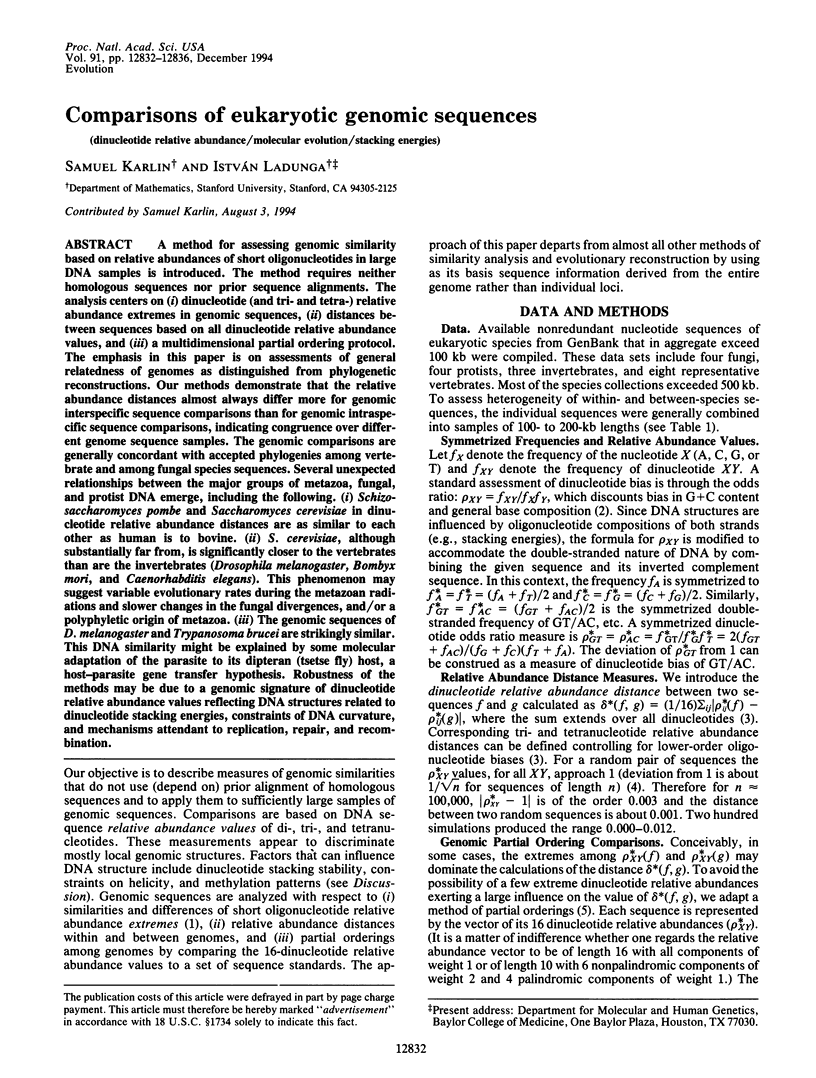
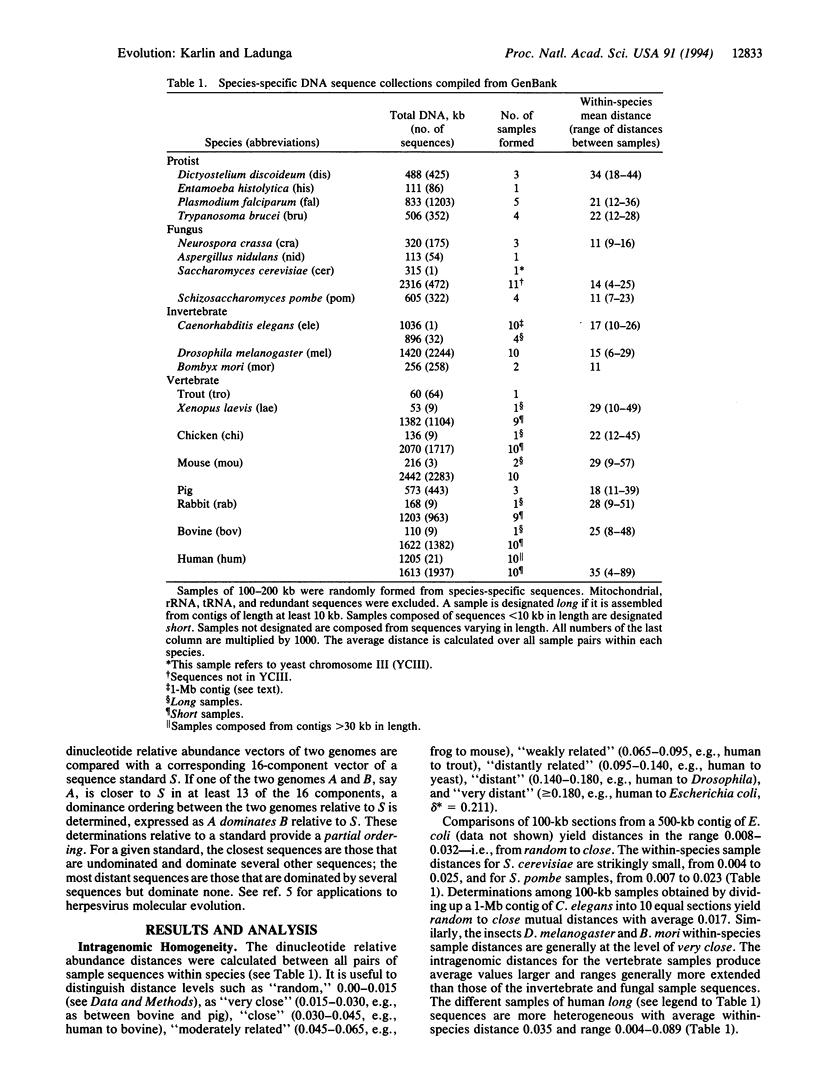
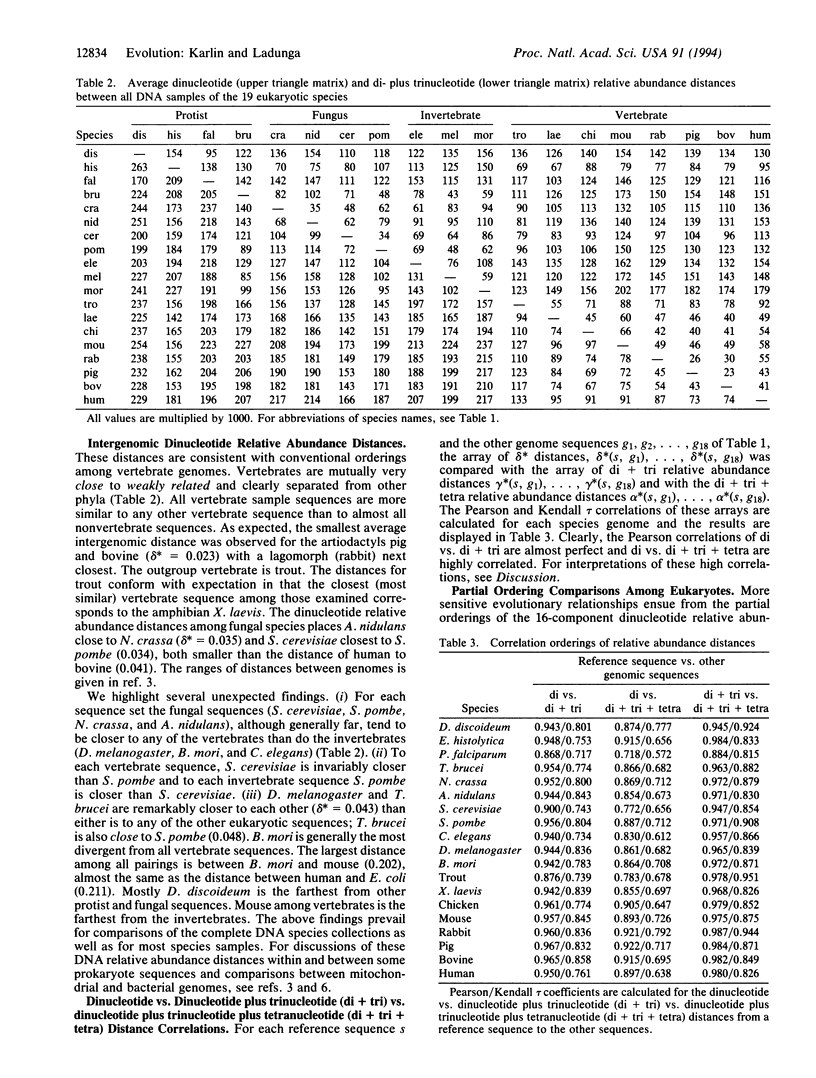
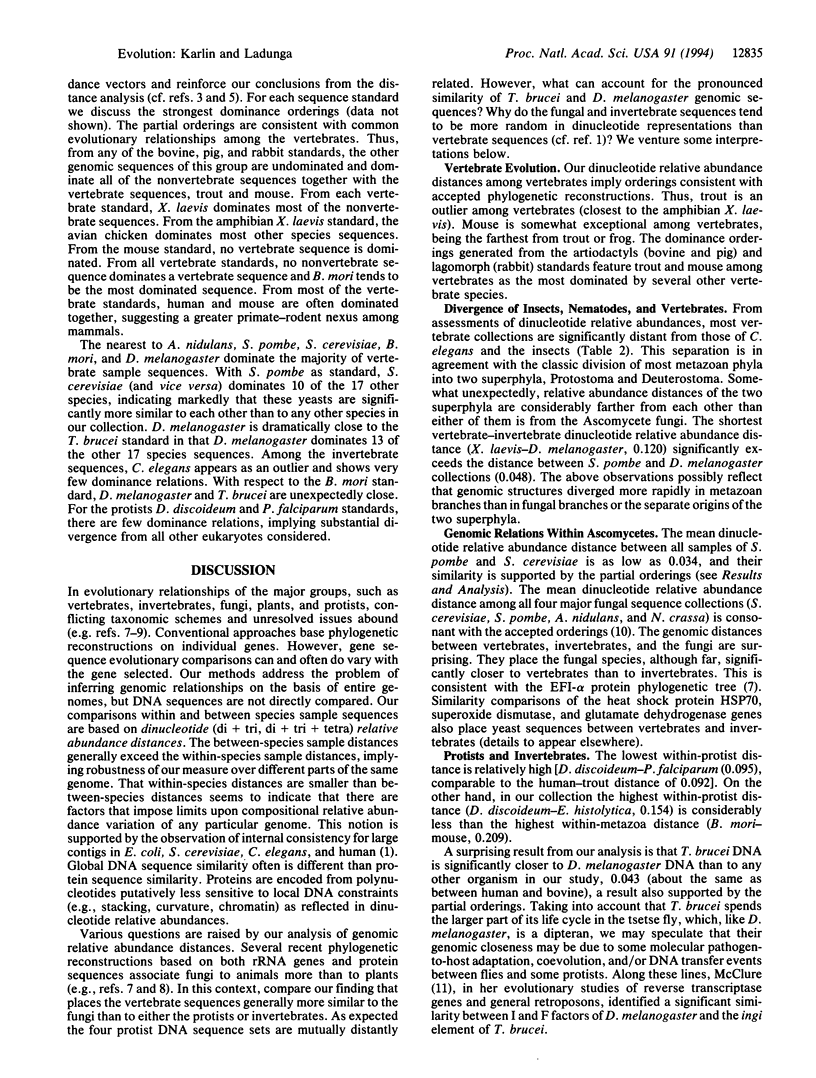
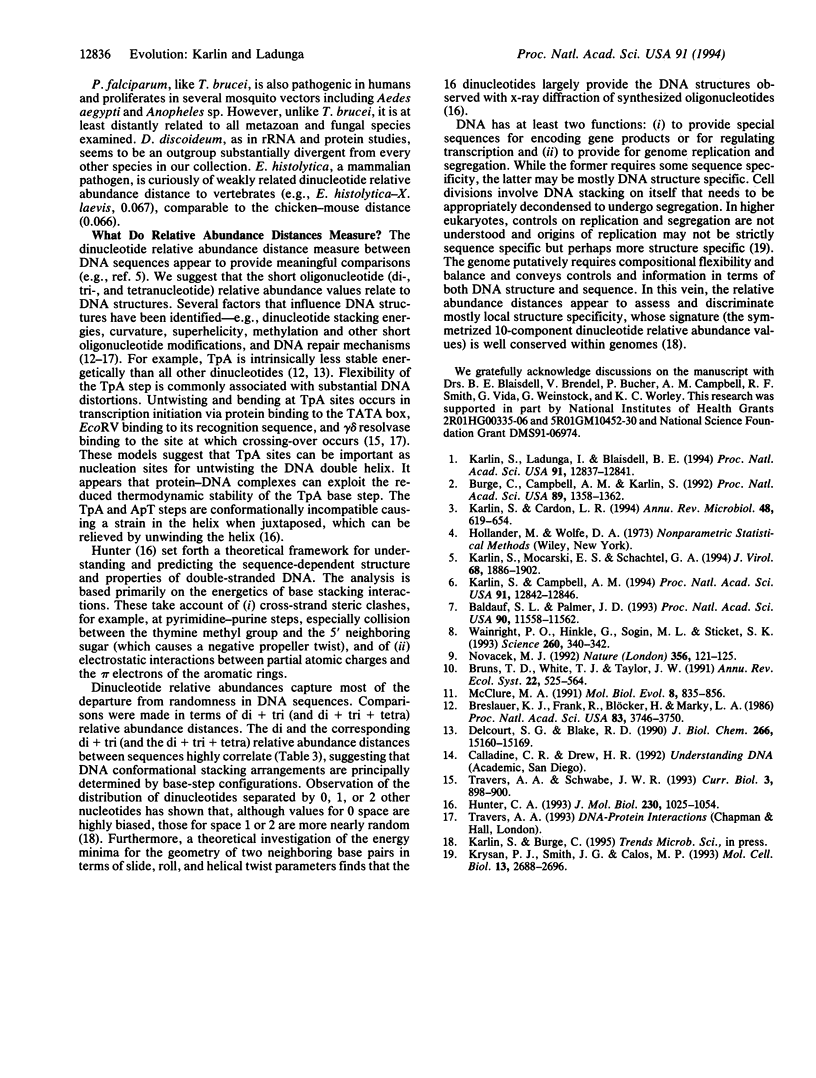
Selected References
These references are in PubMed. This may not be the complete list of references from this article.
- Baldauf S. L., Palmer J. D. Animals and fungi are each other's closest relatives: congruent evidence from multiple proteins. Proc Natl Acad Sci U S A. 1993 Dec 15;90(24):11558–11562. doi: 10.1073/pnas.90.24.11558. [DOI] [PMC free article] [PubMed] [Google Scholar]
- Breslauer K. J., Frank R., Blöcker H., Marky L. A. Predicting DNA duplex stability from the base sequence. Proc Natl Acad Sci U S A. 1986 Jun;83(11):3746–3750. doi: 10.1073/pnas.83.11.3746. [DOI] [PMC free article] [PubMed] [Google Scholar]
- Burge C., Campbell A. M., Karlin S. Over- and under-representation of short oligonucleotides in DNA sequences. Proc Natl Acad Sci U S A. 1992 Feb 15;89(4):1358–1362. doi: 10.1073/pnas.89.4.1358. [DOI] [PMC free article] [PubMed] [Google Scholar]
- Delcourt S. G., Blake R. D. Stacking energies in DNA. J Biol Chem. 1991 Aug 15;266(23):15160–15169. [PubMed] [Google Scholar]
- Hunter C. A. Sequence-dependent DNA structure. The role of base stacking interactions. J Mol Biol. 1993 Apr 5;230(3):1025–1054. doi: 10.1006/jmbi.1993.1217. [DOI] [PubMed] [Google Scholar]
- Karlin S., Campbell A. M. Which bacterium is the ancestor of the animal mitochondrial genome? Proc Natl Acad Sci U S A. 1994 Dec 20;91(26):12842–12846. doi: 10.1073/pnas.91.26.12842. [DOI] [PMC free article] [PubMed] [Google Scholar]
- Karlin S., Cardon L. R. Computational DNA sequence analysis. Annu Rev Microbiol. 1994;48:619–654. doi: 10.1146/annurev.mi.48.100194.003155. [DOI] [PubMed] [Google Scholar]
- Karlin S., Ladunga I., Blaisdell B. E. Heterogeneity of genomes: measures and values. Proc Natl Acad Sci U S A. 1994 Dec 20;91(26):12837–12841. doi: 10.1073/pnas.91.26.12837. [DOI] [PMC free article] [PubMed] [Google Scholar]
- Karlin S., Mocarski E. S., Schachtel G. A. Molecular evolution of herpesviruses: genomic and protein sequence comparisons. J Virol. 1994 Mar;68(3):1886–1902. doi: 10.1128/jvi.68.3.1886-1902.1994. [DOI] [PMC free article] [PubMed] [Google Scholar]
- Krysan P. J., Smith J. G., Calos M. P. Autonomous replication in human cells of multimers of specific human and bacterial DNA sequences. Mol Cell Biol. 1993 May;13(5):2688–2696. doi: 10.1128/mcb.13.5.2688. [DOI] [PMC free article] [PubMed] [Google Scholar]
- McClure M. A. Evolution of retroposons by acquisition or deletion of retrovirus-like genes. Mol Biol Evol. 1991 Nov;8(6):835–856. doi: 10.1093/oxfordjournals.molbev.a040686. [DOI] [PubMed] [Google Scholar]
- Novacek M. J. Mammalian phylogeny: shaking the tree. Nature. 1992 Mar 12;356(6365):121–125. doi: 10.1038/356121a0. [DOI] [PubMed] [Google Scholar]
- Travers A. A., Schwabe J. W. Spurring on transcription? Curr Biol. 1993 Dec 1;3(12):898–900. doi: 10.1016/0960-9822(93)90231-c. [DOI] [PubMed] [Google Scholar]
- Wainright P. O., Hinkle G., Sogin M. L., Stickel S. K. Monophyletic origins of the metazoa: an evolutionary link with fungi. Science. 1993 Apr 16;260(5106):340–342. doi: 10.1126/science.8469985. [DOI] [PubMed] [Google Scholar]


